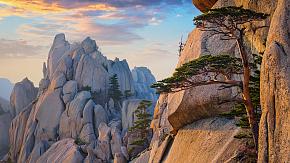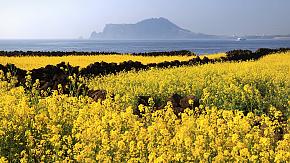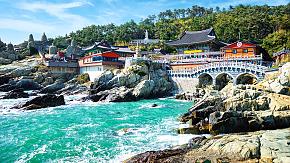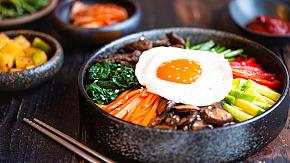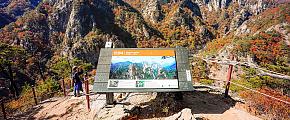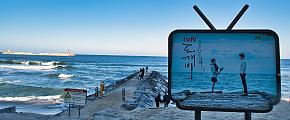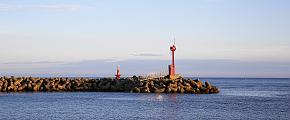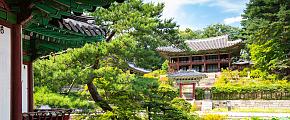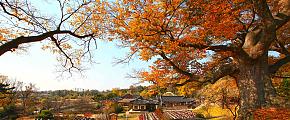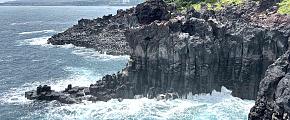Winter in Korea 2025: Snow Sports, Festivals & Events
Visiting South Korea in winter will be really interesting for all-age travelers. Watch the first snow with your lover and make a wish, eat Korean BBQ and drink Soju, dress in traditional clothes and wander around palaces just like characters of K-Drama, skateboard & ski in the ski resorts, have a sauna in a cold day. Oh! My! God! There are countless interesting activities for you to do in winter in South Korea. Just check this guide to discover!
Why Visit South Korea in Winter
Winter is the most romantic season in South Korea and you shouldn't miss any interesting events during a winter vacation in South Korea.
Appreciate the beautiful sea landscape with snow, see the camellia blooming in the cold wind, skiing and snowboarding in a well-equipped resort, ice fishing without a rod, learn how to make kimchi with a local expert, and more fun activities only in winter will surprise you.
It won't be as cold as North America, and it is the off-season in South Korea, which means it will be less crowded and cheaper than other seasons. Moreover, the seats of the subway and bus are even heated in winter!
For me, the most enjoyable thing is to sip a cup of hot latte in a beautiful cafe on Jeju island, just sit by a window, can appreciate the snow falling down on the crystal blue seawater. And I really recommend you to try it too.
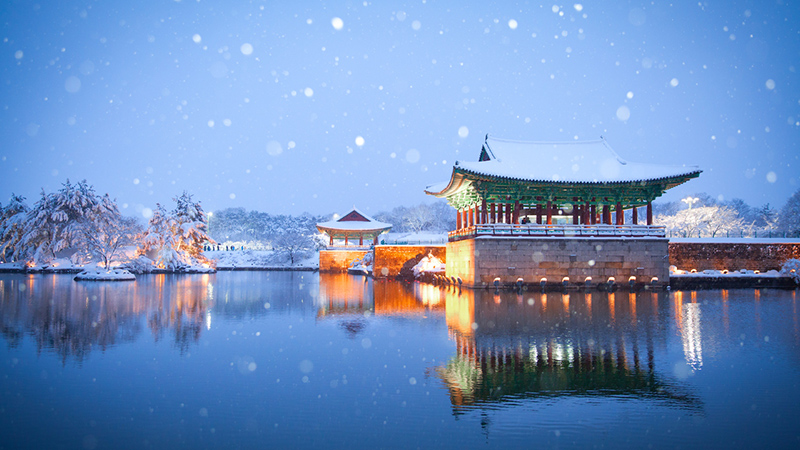 Winter in Korea
Winter in Korea
Crowds & Costs
South Korea in winter has a mix of peak and off-peak crowds, with costs varying depending on different aspects such as accommodation and activities. Mostly it is during the off-season, except Christmas, New Year, and school holidays (mid-December to early January) might be crowded.
Popular winter events like the Hwacheon Sancheoneo Ice Festival and ski resorts in Gangwon Province can be crowded. Some attractions on Jeju Island, which is in the off-season, have fewer tourists.
The cost of international airfare and accommodation in the main cities will be cheaper than in other seasons. The cost of South Korean ski resorts varies. Equipment rental is about $12 - $40. Ski-lift tickets at Yongpyong Ski Resort are around $68 for 8-hour use. Accommodation can range from $18 to over $72 per night.
Best Destinations in South Korea in Winter
Seoul
Seoul in winter is seriously unforgettable! The Seoul Lantern Festival turns Cheonggyecheon into a glowing wonderland with hundreds of light sculptures that look straight out of a storybook. Wearing a hanbok at Gyeongbokgung Palace is a total dream - especially when snow dusts the roofs and makes the ancient buildings look extra beautiful and romantic. Gwanghwamun Square's bazaar is a must - there will be a giant Christmas tree, stalls selling snacks, and so much holiday cheer. And don't skip the "Lonely Tree" in Olympic Park or Deoksugung Palace - snow makes the red tiles pop like a K-drama set. It's all the festive fun and stunning sights rolled into one!
Busan
Busan in winter is a hidden gem! Imagine biting into hot, crispy pajeon (green onion pancakes) by Gwangalli Beach while the sea sparkles under winter sunlight: way less crowded than in summer, so you can enjoy prime ocean views. Head to Haeundae Beach for the Winter Sea Festival, where you can try polar plunges (if you're brave!) or just enjoy some local street food.
Don't miss Gamcheon Culture Village - its colorful houses look extra vibrant against clear winter skies, and you can wander alleyways without the summer crowds. At Gukje Market, you should really try the steaming sundae-guk (blood sausage soup) and shop for cozy winter gear. Plus, the city's hot springs (like Busan Oncheon) are pure bliss when it's chilly. Don't you want to soak in mineral waters while mist rises over the city?
Jeju Island
Jeju in winter is a whole mood. Quiet beaches, volcanic landscapes dusted with rare snow, and a romantic winter vibe! Head to Seongsan Ilchulbong (Sunrise Peak) for epic views of the ocean meeting misty skies, especially magical at dawn. The island's citrus orchards burst with vibrant tangerines (you can pick them fresh!), and Jeju's famous black pork BBQ tastes even better when you're warming up by a fire at a local joint.
Don't miss the Jeju Olle Trails - hiking coastal paths in winter means fewer crowds and dramatic scenes of waves crashing against lava rocks. For a unique experience, visit Manjanggul Cave's frozen waterfalls (yes, really!) or soak in Jusangjeolli's hot springs while surrounded by rugged cliffs. At night, the Jeju Camellia Festival lights up with pink blooms, plus you can cozy up with hallabong tea (made from local citrus) at a seaside café. It's peaceful, scenic, and way less touristy - perfect for a chill winter escape!
Best Activities in Winter in Korea
Let's Ski!
 Ski in Alpensia Resort
Ski in Alpensia Resort
Skiing and snowboarding are the most popular activities of winter. South Korea is a top ski spot for its stunning mountains like Seoraksan, with resorts like Yongpyong (2018 Olympics venue) offering great trails. It's convenient - just 1 to 2 hours from Seoul, so you can mix city fun with skiing. Rentals and English lessons are easy, and skiing under snowfall with village or city lights is magical. Perfect for adventure and culture!
Most resorts in South Korea open from the middle of November to early March. Here I list 5 ski resorts for you to pick the suitable one for your South Korea winter trip.
| Ski Resort | Location | Total number of slopes | Total number of ski lifts | Travel Time From Seoul | Best For |
| Yongpyong | Pyeongchang | 28 Slopes | 13 ski lifts & 1 gondola | 3.5 Hours | Skiers than snowboarders, all levels of skiers, and family-unit skiers |
| Phoenix Park | Pyeongchang | 21 Slopes | 8 ski lifts, 6 sun-kids lifts & 1 gondola | 2 Hours | Snowboarders and family-unit tourists |
| Vivaldi Park | Hongcheon | 12 Slopes | 10 (included gondola) | 1.5 Hours | Couples, students, and teens in their 20s |
| Elysian Gangchon | Chuncheon | 10 Slopes | 6 | 1.5 Hours | Beginners and a short ski break |
| Alpensia | Pyeongchang | 6 Slopes | 3 | 3 Hours | Beginners, snowboarders and family-unit skiers |
Wearing Hanbok on a Snowy Day
There are many sayings about the first snow in South Korea. If you make a wish on the day of first snow, it will come true. If you profess your love on the day of the first snow, your love will come to you. Why not dress in hanbok and perform as the main character of a K-drama? It is a magical mix of tradition and coziness.
Layered silk or cotton hanboks (like padded jeogori jackets) keep you warm, while vibrant colors pop against snowy backdrops. Pose at Gyeongbokgung Palace or Namsangol Hanok Village, where staff often help with styling. Pair it with fur-trimmed accessories or sip hot cinnamon tea nearby. It's like stepping into a historical drama, blending culture with winter wonder.
Hot Spring and Sauna in Cold Days
In winter, going to a jjimjilbang (Korean sauna) is a great way to keep warm. The average cost is about 10,000 won per person. There are various types of showers, baths, and saunas with different temperatures inside. Jjimjilbang is a place where you can experience the most authentic life of Korean people. You can also enjoy Korean sauna food, break eggs with your head and drink sweet rice dew just like a real Korean do.
Enjoy Warm or Spicy Food in Chill Days
Imagine wrapping your hands around a hot bowl of samgyetang (ginseng chicken soup), its herbal aroma and tender meat chasing away the cold. Then, dig into a plate of tteokbokki, where chewy rice cakes swim in a fiery, spicy red sauce that makes your taste buds dance. The sauce, often made with gochujang (Korean chili paste), is so addictive, with a hint of sweetness balancing the heat. For an extra kick, add some spicy fish cakes or kimchi to the mix.
On snowy days, hotteok (caramel-filled fried pancakes) steam in your hands, offering a sweet contrast to the spiciness. And don't miss out on budae jjigae (army stew), a spicy medley of sausages, ramen, kimchi, and an array of vegetables all simmering in a spicy broth. The combination of different textures and the bold, spicy flavor is incredibly satisfying. You can also try jjamppong, a spicy seafood noodle soup, with its rich, spicy broth filled with plump shrimp, squid, and mussels.
 Budae Jjigae (Army Stew)
Budae Jjigae (Army Stew)
Or just try some authentic flavors in a street food stall or traditional restaurant, and let these rich, hearty, and spicy dishes (like soybean stew or grilled mackerel) warm you from the inside out.
Festivals in Winter in Korea
Hwacheon Sancheoneo Ice Fishing Festival
Have you ever tried fishing without a rod? A key tradition of the Hwacheon Sancheoneo Ice Fishing Festival is ice fishing for trout in frozen rivers, where participants drill holes and use simple gear to catch fish, often with locals sharing tips. After catching, you can grill the trout on-site, a popular way to enjoy the fresh catch. Fun includes bare-handed trout catching in icy water, a test of bravery, and winter sports like sledding and ice football. There's also an ice sculpture square with stunning artworks and traditional games like arrow-throwing. The festival blends nature, culture, and thrill, letting visitors experience Korean winter traditions in a lively, chilly atmosphere.
Winter Light Shows
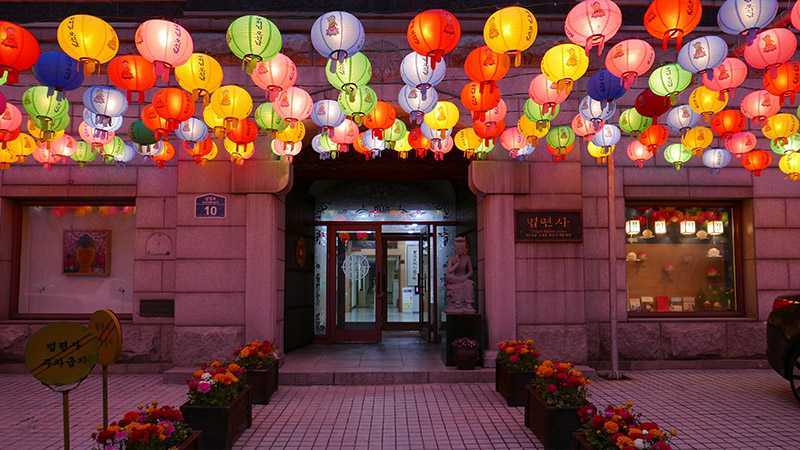 Enjoy Festive Atmosphere in Seoul
Enjoy Festive Atmosphere in Seoul
In South Korea, winter light shows offer immersive experiences under twinkling displays. Here's what makes them special:
Cheonggyecheon Stream Light Festival
Seoul's Cheonggyecheon transforms with millions of LED lights - stars "float" on the water, and tunnels of light create a dreamy path. Interactive installations let you "touch" light patterns, while the icy stream adds a wintery edge.
Garden of Morning Calm Lighting Festival
In Gapyeong, this garden drapes trees, lakes, and bridges in colorful lights. A 200-meter-long tunnel of red lanterns (inspired by traditional jeongja) and laser shows over the pond feel like stepping into a fairytale.
Lotte World Magic Light Festival: Indoor and outdoor lights at this Seoul theme park include a 10,000-light Christmas tree and a "snowfall" of lights in the Adventure zone. Pair it with rides for a playful twist.
Nami Island Winter Sonata Lights
Channel the iconic drama with riverside lights, pine trees wrapped in white bulbs, and a romantic "light tunnel" walk. Evening ferry rides to the island add to the magic.
These shows often run from late November to early February, combining warmth (think hot tea stalls) with the glow of winter nights.
Taebaeksan Snow Festival
The Taebaeksan Snow Festival is a winter wonderland filled with excitement and charm. Held against the backdrop of the majestic Taebaeksan Mountain, the festival features incredible snow sculptures created by talented artists. These massive, intricate works of art range from lifelike animals to fantastical scenes, lighting up the night with colorful illuminations. You can enjoy thrilling activities like sledding down snow-covered slopes, building snowmen, and taking part in snowball fights. There are also traditional Korean cultural performances and food stalls offering warm street food, making it a perfect blend of fun, culture, and winter magic.
Christmas in South Korea
South Korea's Christmas is less religious and more about couples and friends. It features unique food like fried chicken, and shorter celebrations, and focuses on commercial light shows over religious decor. Many Koreans visit churches for midnight masses, while cities like Seoul glow with lights.
Myeong-dong's streets and COEX Mall's installations are iconic. Couples often exchange gifts and visit romantic spots like Namsan Tower, where love locks glisten in the snow. Families enjoy feasts of fried chicken (a Christmas staple), cake, and hot chocolate. Theme parks like Lotte World and Everland host special events with parades and snow-themed rides.
South Korea Travel Tips in Winter
Weather and packing
Winter in South Korea (Dec - Feb) is cold, with temperatures often below freezing. In Seoul, it can range from -5°C to 5°C. Pack thermal clothing, a waterproof coat, anti-slip boots, and skincare products like moisturizer and lip balm to combat dry air.
Preparation for transportation
Mountain and rural roads may close due to snow. Use apps like Kakao Mobility for real-time transit info on subways and buses. Be prepared for cold waits at outdoor stops.
Indoor places might be dry
Many places, especially guesthouses, use ondol floor heating, which can dry out the air. Ask for a humidifier or use a simple water bowl near the heater.
Notice public holidays
Christmas (Dec 25) is a public holiday, but New Year's Day (Jan 1) has more closures. Plan your sightseeing around these dates to avoid disruptions.
Health and Safety
Buy cold medications and hand warmers from convenience stores. Avoid outdoor activities during extreme cold spells and check the Korea Meteorological Administration for advisories.
Related Posts You May Like
What Our Clients Say
Explore the latest verified reviews of Odynovo's travel services on Tripadvisor, Google, Trustpilot, Product Review and more trusted platforms.

